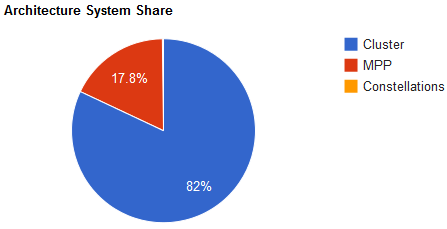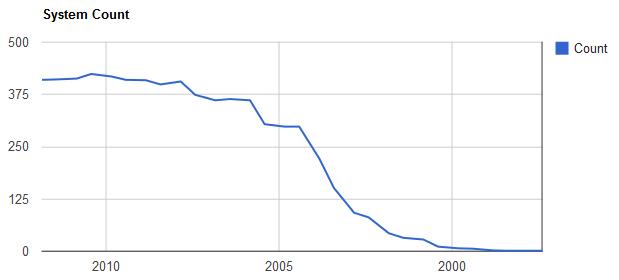CSC/ECE 506 Spring 2012/1a mw
Comparisons Between Supercomputers
Introduction
Supercomputers are specialized computers that are generally very expensive, not available for general purpose use and are used in computations where large amounts of numerical processing is required. They are used in scientific, military, graphics applications and for other number or data intensive computations <ref>http://dictionary.reference.com/browse/supercomputer Definition of supercomputer</ref>, <ref>http://www.webopedia.com/TERM/S/supercomputer.html Definition of supercomputer</ref>.
Supercomputers are generally compared qualitatively using floating point operations per second, or FLOPS. Using standard prefixes, higher levels of FLOPS can be specified as the computing power of supercomputers increases. For example, KiloFLOPS for thousands of FLOPS and MegaFLOPS for millions of FLOPS <ref>http://kevindoran.blogspot.com/2011/04/comparing-performance-of-supercomputers.html Doran, Kevin (April 2011) Comparing the performance of supercomputers</ref>. Often you'll see just the first letter of the prefix with FLOPS. For example, for GigaFLOPS or billions of FLOPS, you'll see GFLOPS <ref>http://top500.org/faq/what_gflop_s Definition of GFLOPS</ref>.
A software package called LINPACK is a standard approach to testing or benchmarking supercomputers by solving a dense system of linear equations using the Gauss method. <ref>http://www.top500.org/project/linpack LINPACK defined</ref>. However, LINPACK benchmarking software isn't only used to benchmark supercomputers, it can also be used to benchmark a typical user computer <ref>http://www.xtremesystems.org/forums/showthread.php?197835-IntelBurnTest-The-new-stress-testing-program Intel Benchmark Software</ref>.
Finding Supercomputer Comparison Data
Starting in 1993, TOP500.org began collecting performance data on computers and update their list every six months <ref>http://top500.org/faq/what_top500 What is the TOP500</ref>. This appears to be an excellent online source of information that collects benchmark data submitted by users of computers and readily provides performance statistics by Vendor, Application, Architecture and nine (9) other areas <ref name="t500stats">http://i.top500.org/stats TOP500 Stats</ref>.
Comparison of Supercomputers by Architecture
Supercomputers of today are composed of three (3) types of parallel processing architecture. These architectures are Cluster, Massively Parallel Processing or MPP and Constellation <ref name="t500stats" />.
The following graphic generated at TOP500.org shows the distribution of supercomputers by architecture:
<ref name="t500stats" />
Cluster
A Cluster is a group of computers connected together that appear as a single system to the outside world and provide load balancing and resource sharing <ref>http://searchdatacenter.techtarget.com/definition/cluster-computing Definition of Cluster Computing</ref>. Invented by Digital Equipment Corporation in the 1980's, clusters of computers form the largest number of supercomputers available today <ref>http://books.google.com/books?id=Hd_JlxD7x3oC&pg=PA90&lpg=PA90&dq=what+is+a+constellation+in+parallel+computing?&source=bl&ots=Rf9nxSqOgL&sig=-xleas5wXvNpvkgYYxguvP1tSLA&hl=en&sa=X&ei=aDcnT-XRNqHX0QHymbjrAg&ved=0CGMQ6AEwBw#v=onepage&q=what%20is%20a%20constellation%20in%20parallel%20computing%3F&f=false Applied Parallel Computing</ref>, <ref name="t500stats" />.
TOP500.org data as of November 2011 shows that Cluster computing makes up the largest subset of supercomputers at eight-two percent (82%). The following chart shows the growth of cluster supercomputer systems with the oldest data on the right:
Massively Parallel Processing, MPP
Constellation
Conclusion/Summary
Definitions
For any definitions where you don't have inline hypertext links to the definition you can place the definition of those terms here.
References
Your references go here. You should allow the WIKI to create your references list automatically by using inline citations.
<references />

